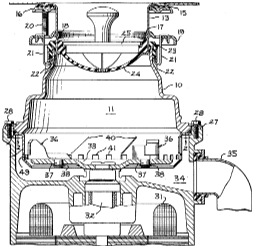
A dishwasher does save water. A new Energy Star qualified dishwasher can save as many as 5,000 gallons of water per year over hand washing the same number of dishes. It will also save approximately $40 in utility bills and 230 hours of time. [Energy Star]
Hand Washing versus Dishwasher
Several studies have had their participants don the yellow rubber gloves and dive in to hand wash dishes to measure which is more efficient hand washing or dishwashing. The newer model dishwashers look like the hands down winners. One such study, published in a 2010 issue of the International Journal of Consumer Studies, measured the difference between the dishwashing habits of 150 participants as compared to their dishwashing habits. In terms of water consumption, the study concluded that on average the hand washed dishes required three times more water than the dishwasher. [Berkholz, 2010]
You as the Consumer Control Your Water Savings
In most cases, dishwashers save more water than hand washing dishes, but there are several consumer decisions that can alter just how much water is saved…if any at all. Is your dishwasher old? Did you choose a model that is Energy Star qualified? Do you take advantage of newer model water savings options?
Newer Dishwashers Are Key to Saving Water
Modern manufacturing techniques are making dishwashers even more efficient. Dishwashers manufactured before mid 1994 use between 8 and 14 gallons of water per load. National efficiency standards set in mid 1994 require that all dishwasher models use less than 10 gallons of water. [US Department of Energy]
Energy Star Qualified Models Save the Most Water
To earn an Energy Star rating since August of 2009, a machine is required to use 5.8 gallons of water or less. For some appliances, the actual water use is half that required to wash the same dishes by hand. Dishwashers that have earned the Energy Star are on average 10% more energy efficient and 20% more water efficient than standard models. [Energy Star]
Water Saving Features
Another way that modern dishwashers save water is through specialized cycles.
- For lightly soiled dishes, most of the newer dishwashers have a shortened cycle that uses less water.
- They also allow the user to skip pre-rinsing. Simply scraping off large scraps of food, as if preparing to wash the dishes by hand, is all that is required. This can save up to 20 gallons of water per load.
- For people who require two or three days to accumulate a full load of dishes, most newer machines have a rinse and hold feature that gets rid of food that may be harder to remove after drying out. On most dishwashers, the rinse and hold cycle will only use one or two gallons of water.
- Some energy efficient dishwashers also have a “soil sensor” to automatically adjust water usage depending on how dirty the dishes are in each load.
Resources
“Handwashing vs. Dishwasher : ENERGY STAR.” Home : ENERGY STAR. N.p., n.d. Web. 25 Mar. 2011. http://www.energystar.gov/index.cfm?c=dishwash.pr_handwash_dishwash.
“Dishwashers Push the Right Buttons and Save.” Iowa Energy Center. N.p., n.d. Web. 25 Mar. 2011. http://www.iowaenergycenter.org/wp-content/uploads/2012/03/HomeSeries4.pdf
. “Automatic Dishwashers carrying the ENERGY STAR logo.” US Department of Energy. N.p., n.d. Web. 13 Mar. 2014. <http://energy.lbl.gov/ea/mills/hes_flat_content/es-prod-dishwasher.html>.
Berkholz, Petra, Rainer Stamminger, Gabi Wnuk, and et. al. “Manual dishwashing habits: an empirical analysis of UK consumers.” International Journal of Consumer Studies 34.2 (2010): 235-242. Print.
Real Life Math
It makes sense that running an energy efficient dishwasher will save money over hand washing for those that carelessly run the water while doing dishes and fill the entire sink numerous times during the process. But I wasn’t so convinced that the same was true for those that are conservative and pay careful attention to dish washing habits. . .until I did the math.
Let’s assume that our conservative dish washer works in a double basin sink. She fills a small plastic dish tub with sudsy water instead of the whole sink. She places dishes in the second sink in a dish rack without rinsing them. When finished, she rinses all dishes at once with the sink sprayer. Surely, this saves more water than running an entire dishwasher. Let’s do the math.
A shallow Rubbermaid® plastic dishpan is 14.45” x 12.55” x 5.67”, the rounded sum of which is 1028 cubic inches. Divide this number by the cubic inches in a gallon of water (221 cubic inches). The total amount of hot water needed to fill the basin one time is 4.6 gallons. It is likely that there will be times that our conservative dish washer will need to fill the basin more than one time to wash the same number of dishes that constitute a full dishwasher load.
A faucet on full flow with no conservation gadgets in place will run 4 gallons of water per minute. Even if it took 60 seconds to rinse the same number of dishes that are in a full dishwasher load, another 4 gallons have been added to the total. Minimally, eight gallons of water have been expended under these seemingly conservative conditions.
With the newer Energy Star ….requiring all models use less than 5.9 gallons of water (many use less than that), it seems that the dishwasher wins again.
Related Products
Shop for built-in dishwashers, portable dishwashers, specialty dishwashers, parts and accessories, and more.






